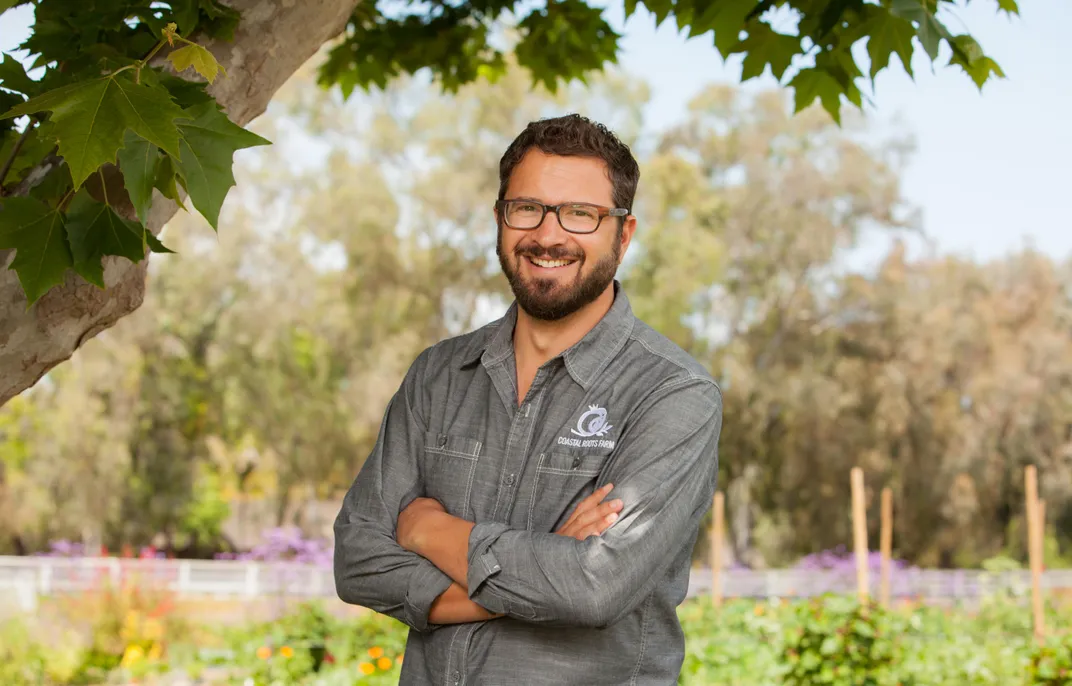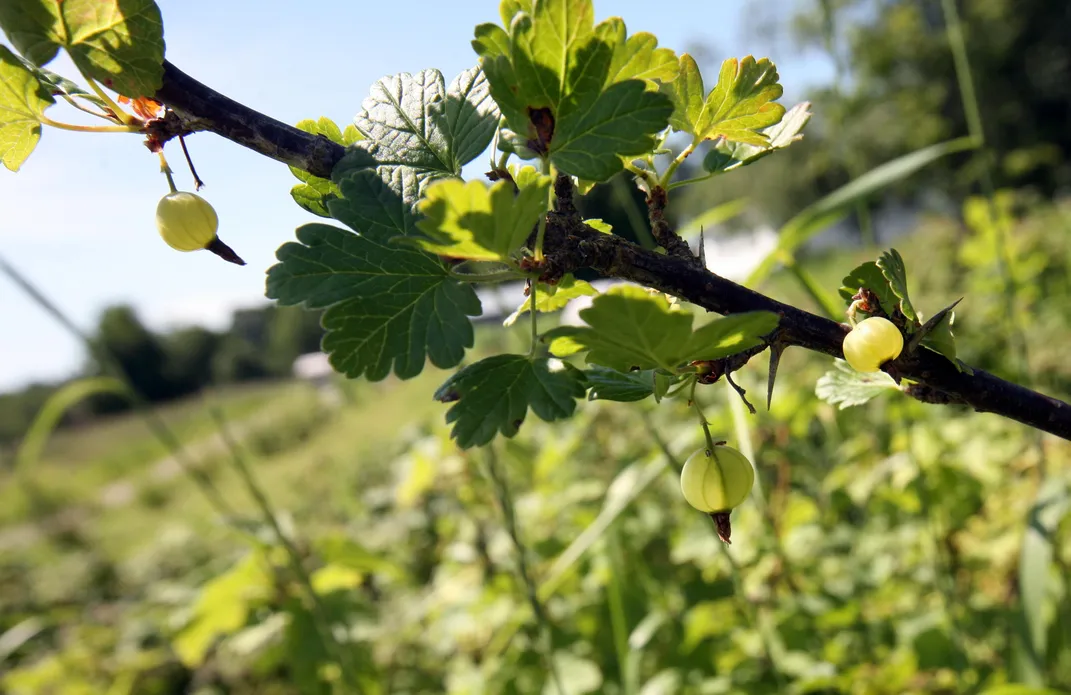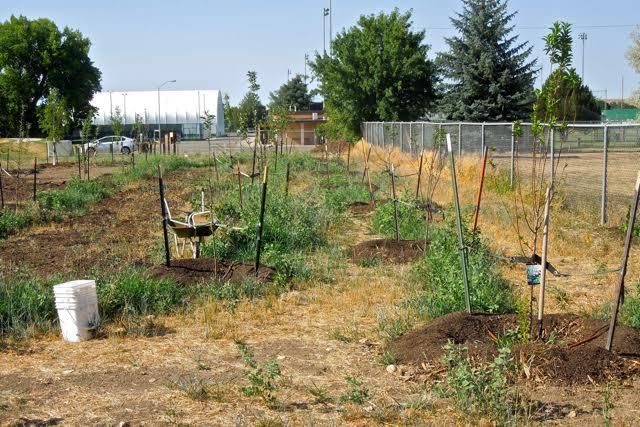Move Over, Community Gardens: Edible Forests Are Sprouting Up Across America
These new urban forests let you pick your own produce. But will the concept take root?
/https://tf-cmsv2-smithsonianmag-media.s3.amazonaws.com/filer/f7/f6/f7f6359e-5b2c-4121-9328-bc5f885898e8/dsc00108_web.jpg)
Earlier this summer, Carol LeResche got the phone call she’d been waiting for: A resident of Sheridan, Wyoming, was picking zucchini at Thorne Rider Park. “It’s exactly what we hoped would happen when we put in the food forest,” explains LeResche, the park’s food forest coordinator.
In May, the Powder River Basin Resource Council in Sheridan received a $3,500 grant from the Wyoming Department of Agriculture to turn a former BMX park into an edible landscape where all of the fruits, vegetables and nuts are free for the taking. U
nlike some parks with strict “no picking” policies, or parks where foraging is permitted but plantings emphasize aesthetics over edibles and just a fraction of the species can be consumed, food forests are designed to provide bountiful crops that residents are encouraged to harvest. And although there are no solid statistics on the number of food forests—one website that maps the locations of these “forest gardens” lists just 63 sites across the U.S.—the concept appears to be taking root.
At Thorne Rider Park, zucchini are the first vegetables to ripen in the brand new food forest; as the other edibles mature, LeResche hopes residents will dig up potatoes for supper, gather raspberries to make jam or snack on ripe figs plucked straight from the trees. “We think it’s important to put public food in public spaces,” she says.
Food forests may seem like a spin-off of community gardens, but there are distinct differences. Residents often have to pay to rent plots in community gardens, invest in the seeds and devote the labor required to maintain their plots—which can be a burden for low-income families who are strapped for cash and time. In contrast, food forests are funded through grants and, until the forests are self-sustaining, volunteers handle the labor; all hungry residents have to do is show up and pick their fill.
Food forests also provide different kinds of fresh produce than community gardens, emphasizing perennials like fruit and nut trees and berry bushes over annual vegetables. Despite the differences, Rachel Bayer, director of programs for Project Learning Tree, a program of the American Forest Foundation, believes both are important for addressing food deserts. “It’s important to grow a diversity of fruits and vegetables,” she says. “Food forests aren’t better or worse than community gardens; both have their place in urban communities.”
Food forests also offer environmental benefits, providing essential forest canopy that is lacking in urban areas, helping to minimize the heat island effect and providing community gathering spaces where residents can participate in tours and classes or relax among the fruit trees.
“Our desire to be more connected to where our food comes from is one of the reasons there is a real trend toward integrating agriculture into neighborhoods and communities,” explains Daron “Farmer D” Joffe, founding director of Coastal Roots Farm, a nonprofit that manages an eight-acre food forest in Encinitas, California, under the direction of the nonprofit Leichtag Foundation.

Asheville, North Carolina is believed to be home to the first food forest; there are 40 varieties of fruit and nut trees in George Washington Carver Edible Park, which was founded in 1997. More than a decade later, similar projects began to sprout up in cities like Portland, Oregon, San Francisco and Seattle.
Most food forests are similar in approach, bringing together parks and recreation districts (which provide land), nonprofit groups and volunteers who handle the labor and maintenance. The designs are similar, too.
Food forests are based on permaculture design, a model emphasizing sustainable and mostly self-sufficient agricultural production. To achieve this, most food forests incorporate stacked layers of edible plants from root crops, ground cover, vines and herbs to shrubs and trees. From the ground up, the edibles might include beets, strawberries, grapes, basil, blueberries, fruit and nut trees.
The food forest model, according to Joffe, requires less chemical fertilizer and is less labor intensive than conventional agriculture. An edible forest, like a hardwood forest, is designed to thrive without pesticides or herbicides or crop rotating, weeding or mowing. Establishing a food forest, however, requires a significant amount of effort and new farmers are often tapped for the roles of project implementation. (The Leichtag Foundation just hired its first food forest coordinator to work with Coastal Roots Farm on the project).

Research published in the architecture journal field has found that urban agriculture, including food forests, helps preserve biodiversity and reduces the energy required to grow and distribute food. The researchers also noted that these kinds of productive urban landscapes can make significant contributions to meeting local produce needs, simply by making use of abandoned or leftover spaces. Indeed, food forests are often planted in food deserts to improve access to fresh, local produce.
Establishing farmers markets in underserved urban areas and offering “double bucks” programs to stretch SNAP/WIC dollars has helped improve local food access but, for low-income residents, food forests offer a distinct advantage: Access isn’t limited to market hours and there are no concerns about how much produce can be purchased with federal funds. As long as there is fruit on the trees, communities can eat their fill (and harvest enough to preserve foods for the winter).
Coastal Roots Farm has built food access into its mission for the food forest. The 8-acre forest was planted this spring and when the harvest is ready, a portion of it will be sold through the farm-operated CSA; a portion will be donated to food-insecure communities through food banks and the rest will be available for public harvesting. “Food forests are designed to plant more edibles in public spaces to help localize food, address food deserts and food access issues and connect people to the sources of their food,” Joffe explains.

Despite the good intentions of those who support food forests, critics warn that these edible landscapes could be problematic. Since the concept is relatively new—and it takes at least three years for fruit and nut trees and berry bushes to start producing meaningful amounts of fresh food—it’s hard to know whether food forests will have an impact on food deserts.
The often volunteer-driven projects can fall apart if the group lacks cohesion or loses interest. Lack of funding can also be problematic. In Sheridan, the original $3,500 grant helped kick start the project, but LeResche estimates it will take $50,000 to complete the food forest plan. A group of volunteers is fundraising to continue its efforts.
Pests are an oft-cited concern. One Canadian report noted that in Toronto, public concerns over food forests attracting bees, fallen fruit creating a mess and the design taking over recreational space led to the food forest at Ben Nobleman Park being downsized from a planned 40 fruit trees to just 14.
Joffe is familiar with the concerns. “All trees spit off seeds, pollen and leaves. All trees have the potential to attract pests or interfere with sightlines. All trees need maintenance and fruit trees are no different,” he admits. “If a food forest is well managed, there is no issue. You create a detailed plan, harvest the fruit when it’s ripe and compost what falls to the ground.”
There are also concerns that food forests will be over-harvested and could lead unscrupulous visitors to take more than their fare share, perhaps to resell at market. LeResche has no plans to police the amount of produce being harvested at the food forest in Sheridan. “We’re aware of the possibility that people might take advantage but we are not restricting people’s access to fresh food,” she says.
After all, LaResche explains, food might be at the heart of the edible forest model but food forests are about a lot more than food. “Yes, we want to feed people,” she says. “We also want to provide a community gathering space that is productive and beautiful where people can cultivate a relationship with the land and get connected to delicious, healthy produce.”